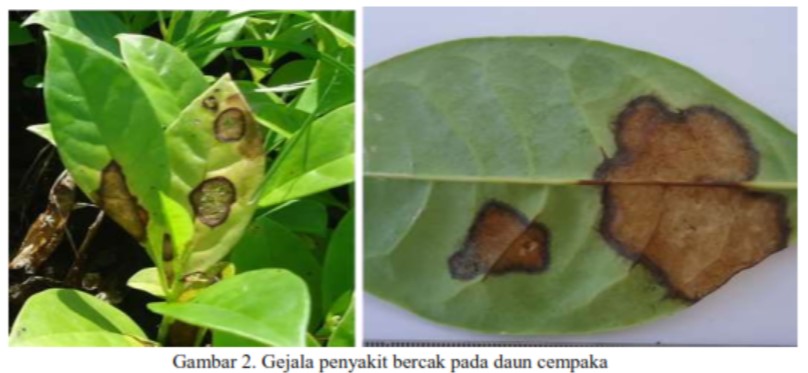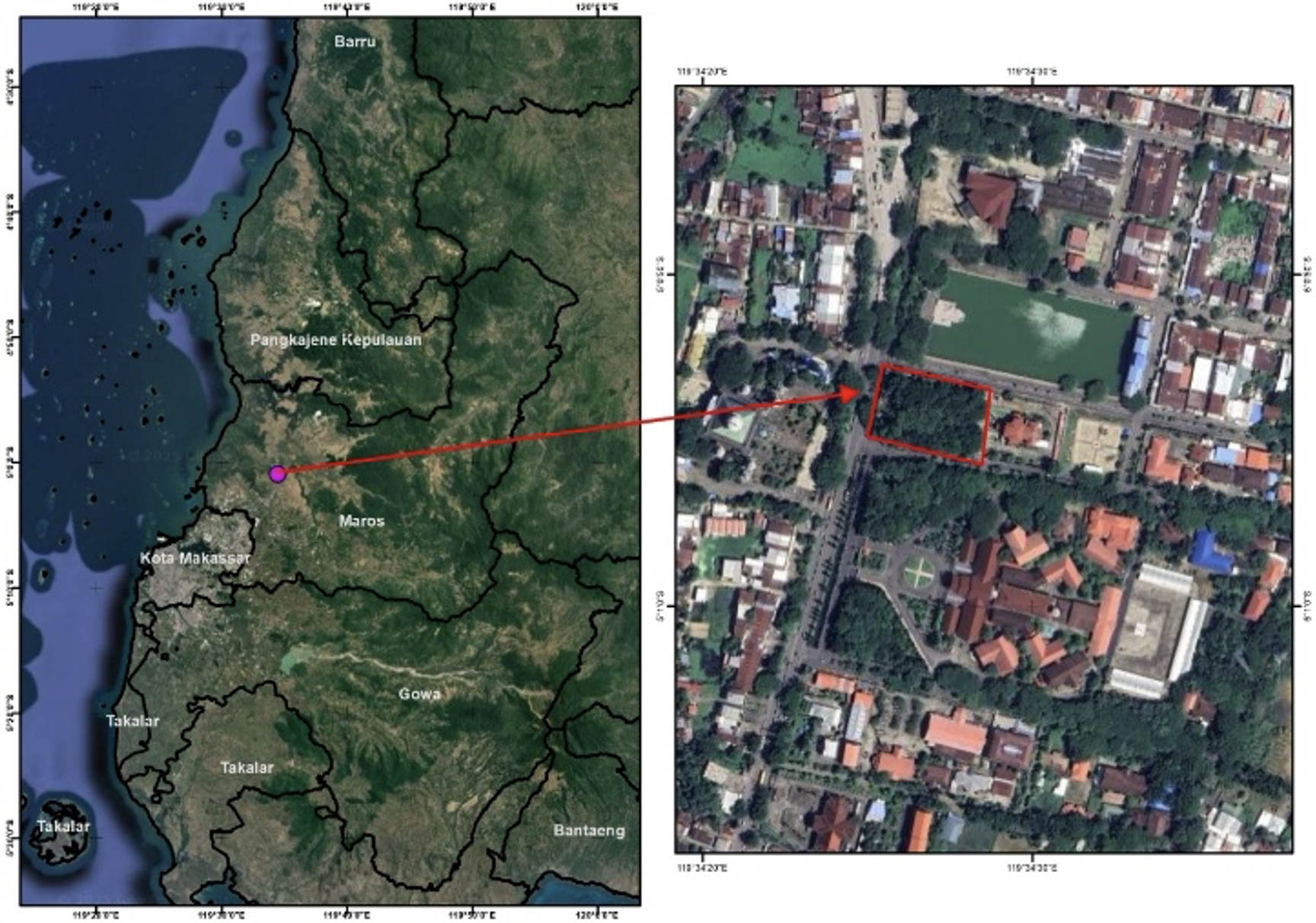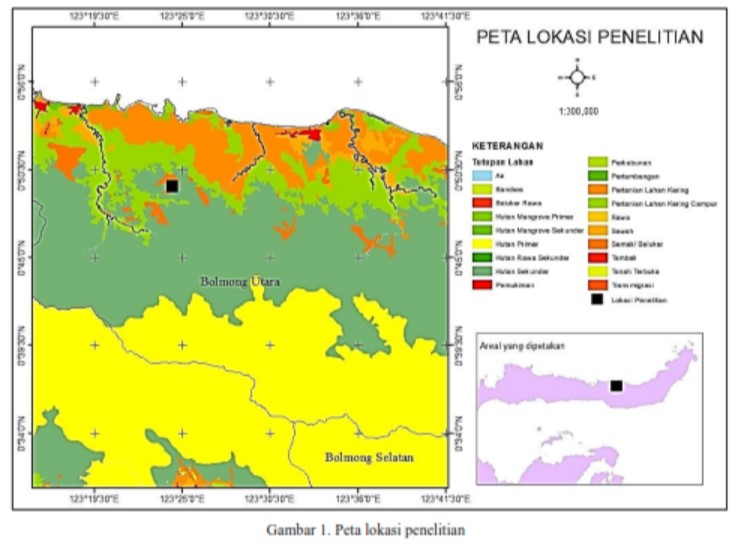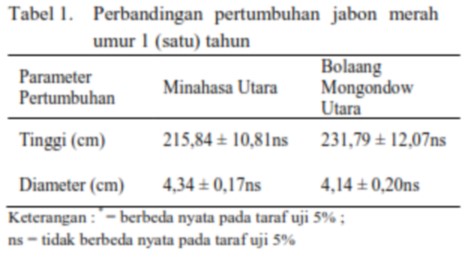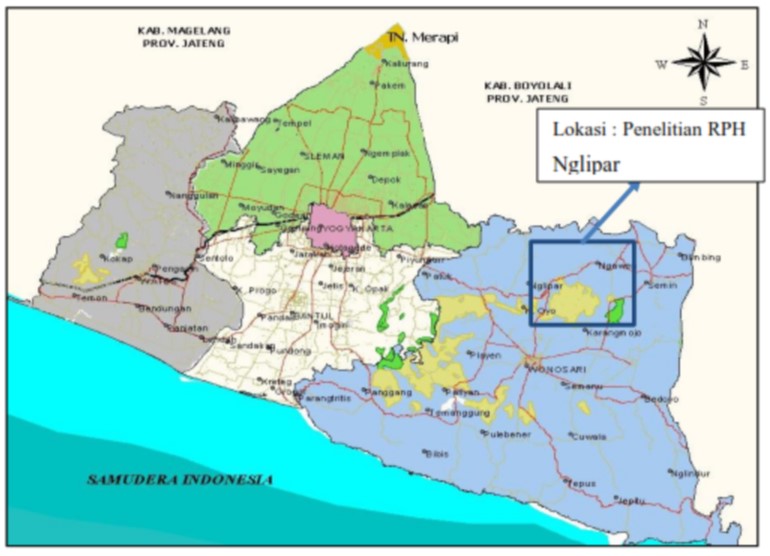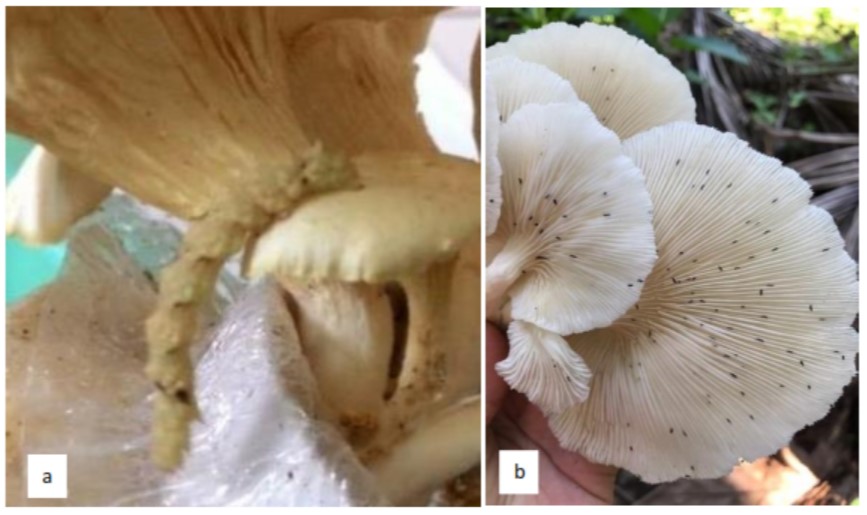Identification of causes of red leaf spot on red jabon (anthocephalus macrophyllus roxb.) Havil) seeds in kima atas permanent nursery, forestry research institute of manado
Abstract
Fulfillment the needs of Red Jabon (Anthocephalus macrophyllus (Roxb.) Havil) seeds on the other hand can create an unbalanced ecosystem. The availability of red Jabon seed was becoming a source of food for pests, then it causes an explosion of pests and pathogens. The disease that most often affect red Jabon seeds, both in the nursery and in the field was red leaf spot (antraknose). The initial step to control red leaf spot disease is the identification of causing. Identification method performed by observation of the symptoms in the field, followed by microscopic observation in a laboratory. Based on the identification result, it was known that the disease caused by the fungus Cercospora sp., Colletotrichum sp. and Pestalotia sp. The effect caused by those fungal pathogens was the disruption of the photosynthetic process that ultimately inhibits the growth of red Jabon seeds. The controls which have been done are arranged the watering intensity, isolated the infected seed,and applied the chemical fungicide.
Copyright (c) 2015 Jurnal Wasian

This work is licensed under a Creative Commons Attribution-NonCommercial 4.0 International License.
Copyright and License
All articles published in Wasian Journal are the property of the authors. By submitting an article to Wasian Journal, authors agree to the following terms:
-
Copyright Ownership: The author(s) retain copyright and full publishing rights without restrictions. Authors grant the journal the right to publish the work first and to distribute it as open access under a Creative Commons Attribution 4.0 International License (CC BY 4.0).
-
Licensing: Articles published in Wasian Journal are licensed under a Creative Commons Attribution 4.0 International License (CC BY 4.0). This license allows others to share, copy, and redistribute the material in any medium or format, and adapt, remix, transform, and build upon the material for any purpose, even commercially, provided that proper credit is given to the original author(s) and the source of the material

This work is licensed under a Creative Commons Attribution 4.0 International License. -
Author's Rights: Authors are permitted and encouraged to post their work online (e.g., in institutional repositories or on their website) prior to and during the submission process, as it can lead to productive exchanges and greater citation of published work.
-
Third-Party Content: If your article contains material (e.g., images, tables, or figures) for which you do not hold copyright, you must obtain permission from the copyright holder to use the material in your article. This permission must include the right for you to grant the journal the rights described above.
-
Reprints and Distribution: Authors have the right to distribute the final published version of their work (e.g., post it to an institutional repository or publish it in a book), provided that the original publication in Wasian Journal is acknowledged.
For the reader you are free to:
- Share — copy and redistribute the material in any medium or format for any purpose, even commercially.
- Adapt — remix, transform, and build upon the material for any purpose, even commercially.
- The licensor cannot revoke these freedoms as long as you follow the license terms.
Under the following terms:
- Attribution — You must give appropriate credit , provide a link to the license, and indicate if changes were made . You may do so in any reasonable manner, but not in any way that suggests the licensor endorses you or your use.
- No additional restrictions — You may not apply legal terms or technological measures that legally restrict others from doing anything the license permits.
Notices:
You do not have to comply with the license for elements of the material in the public domain or where your use is permitted by an applicable exception or limitation .
No warranties are given. The license may not give you all of the permissions necessary for your intended use. For example, other rights such as publicity, privacy, or moral rightsmay limit how you use the material.
Most read articles by the same author(s)
- Arif Irawan, Illa Anggraeni Anggraeni, Margaretta Christita, Identification Causes Leaf Spot Disease in Cempaka (Magnolia elegans (Blume.) H.Keng) Seedling and Its Control Techniques , Jurnal Wasian: Vol. 2 No. 2 (2015): December
- Arif Irawan, Hanif Nurul Hidayah, Suitability of Cocopeat as a Transplanting Media in the Polytube of Magnolia elegans (Blume.) H. Keng Seedlings , Jurnal Wasian: Vol. 1 No. 2 (2014): December
- Arif Irawan, Hanif Nurul Hidayah, Growth Comparison of Red Jabon in North Bolaang Mongondow and North Minahasa , Jurnal Wasian: Vol. 3 No. 1 (2016): June


